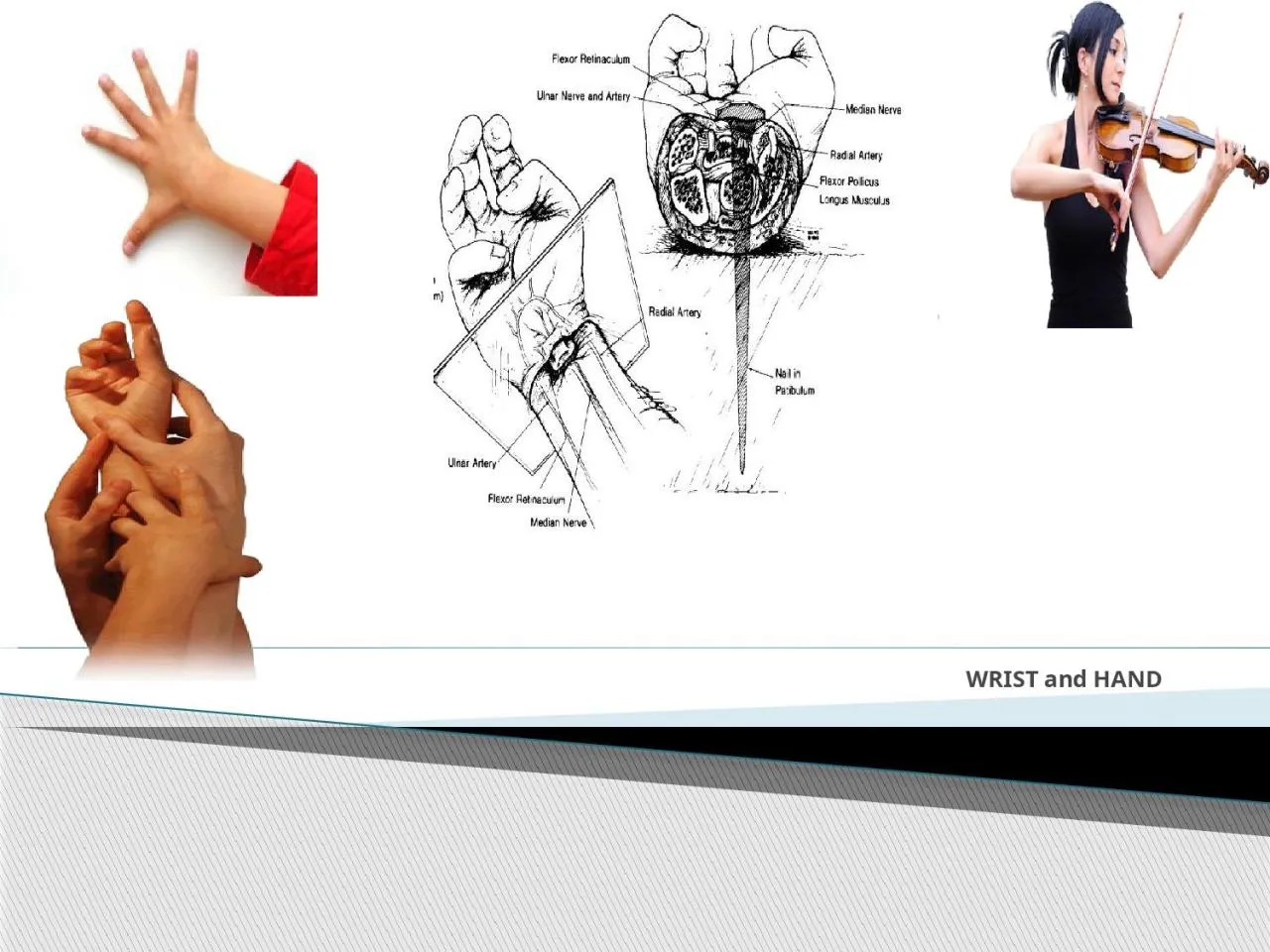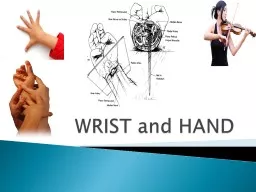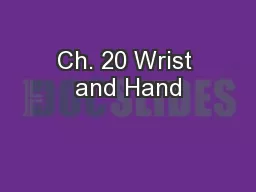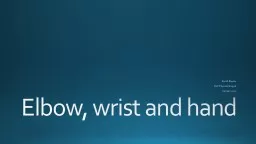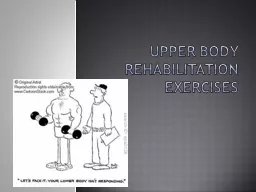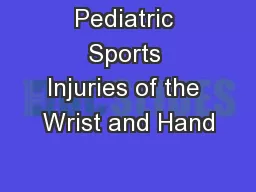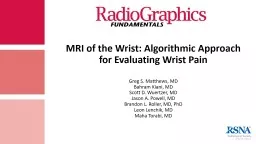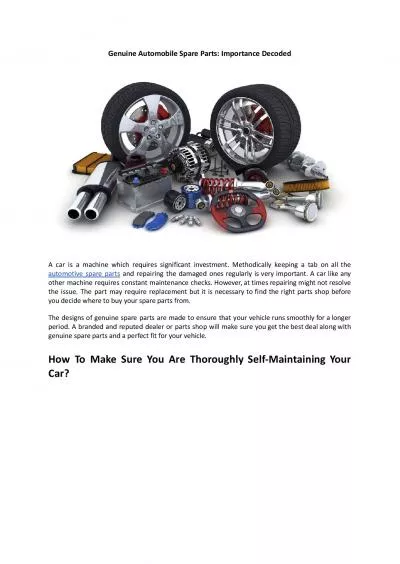PPT-WRIST and HAND The hand and the wrist are the most active and the most intricate parts
Author : jordyn | Published Date : 2022-06-01
Magee David Orthopedic Physical Assessment 4 th Ed Vulnerable to injury and does not respond well to serious trauma Magee David Orthopedic Physical Assessment 4
Presentation Embed Code
Download Presentation
Download Presentation The PPT/PDF document "WRIST and HAND The hand and the wrist ar..." is the property of its rightful owner. Permission is granted to download and print the materials on this website for personal, non-commercial use only, and to display it on your personal computer provided you do not modify the materials and that you retain all copyright notices contained in the materials. By downloading content from our website, you accept the terms of this agreement.
WRIST and HAND The hand and the wrist are the most active and the most intricate parts: Transcript
Download Rules Of Document
"WRIST and HAND The hand and the wrist are the most active and the most intricate parts"The content belongs to its owner. You may download and print it for personal use, without modification, and keep all copyright notices. By downloading, you agree to these terms.
Related Documents

